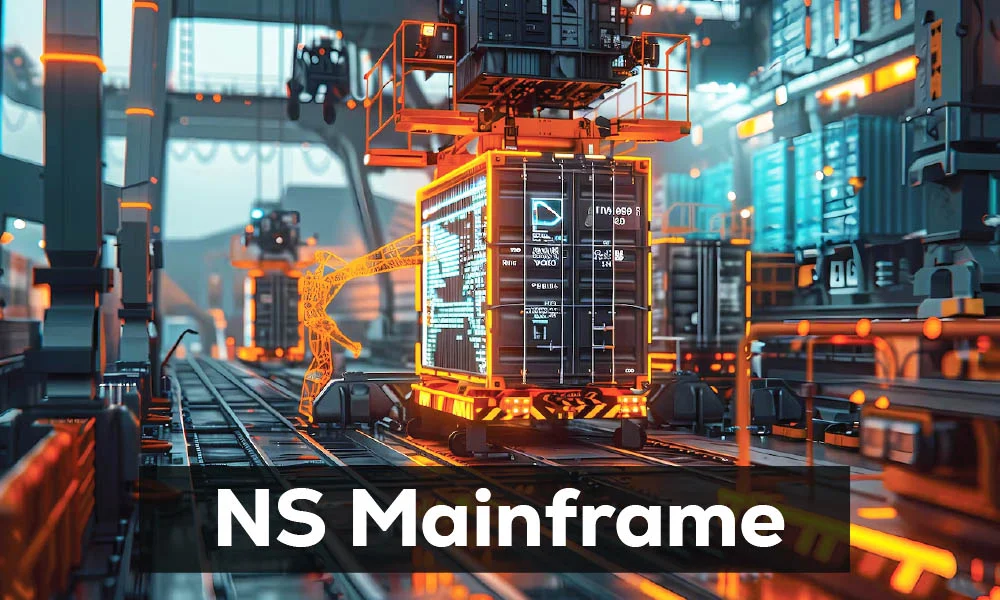Table of Contents
Introduction to Mainframe Computing
Envision a realm where businesses operate seamlessly, data is processed, and transactions are completed in mere milliseconds. Welcome to the world of NS Mainframe computing. Despite being labeled as ‘powerful machines,’ many overlook NS Mainframes to chase the allure of flashy new technologies. Nevertheless, NS Mainframes have remained pivotal for enterprises in modern operational efficiency and multilayered dependability across industries.
The ongoing digital transformation paradigm shift opens new avenues for enterprises while highlighting the significance of NS Mainframes systems. Their robust architectures, alongside their fascinating history and boundless potential, showcase the necessity and legacy NS Mainframes have earned around the globe. There is a lot to appreciate for tech aficionados and business professionals eager to learn about enterprise technology, especially the hidden gems that tirelessly support organizations from the shadows.
Evolution of Mainframes
Since the 1950s, mainframes have advanced a lot. The computers of this age were “great machines” since they had enormous amounts of power. These systems were intricate tools mainly utilized for computation and data processing tasks.
With the introduction of integrated circuits, 1960s technology took another leap forward. With the use of smaller yet powerful components, the mainframes of yore were more efficient and low-cost. The industry was starting to see the positive impacts of technological advancements.
The 1980s brought major change as more user-friendly interfaces were added to mainframes. This caused a shift in how such machines were perceived, allowing for their use in new sectors. Businesses started utilizing them for more than just data processing, signaling an evolution in industry understanding.
Modern NS Mainframe systems highlight the importance of advanced technology along with raw processing capabilities. Their cloud integration capabilities, paired with robust security features, truly set them apart in reliability. Their evolution reflects the constantly changing demands of enterprise computing while maintaining reliability at scale.
Key Features and Advantages of Mainframes

Mainframes possess impressive processing power. They are able to manage enormous volumes of data and information concurrently, making them suitable for large enterprises. This feature guarantees effective transaction processing and real-time data analysis.
Mainframes have a standout feature, which is security. They incorporate advanced encryption and access control mechanisms that safeguard vital data from breaches. They maintained the strictest compliance frameworks to adhere to the toughest regulatory demands.
Equally differentiating mainframes is their scalability. Systems can be effortlessly expanded to handle increasing workloads with minimal system downtime or disruption.
Reliability is also critical. Mainframe systems are built for sustained functionality, achieving near continuous uptime of 99.999%. Such dependability is crucial for industries such as finance and healthcare.
Do not dismiss cost-effectiveness. Mainframes reduce organizational operational costs and cost per transaction over time despite seeming to have a high upfront investment. Enterprises spend fewer resources on operational processes and maintenance over time when compared to the initial investment.
Use Cases and Industries that Utilize Mainframes
Mainframes are vital in different fields and industries as they provide a strong infrastructure for enterprise computing. NS Mainframe technology is the backbone for all financial institutions as they use it to process millions of transactions daily. This technology’s dependability and speed of processing large amounts of data is unmatched.
Healthcare organizations also use mainframes for the management of patient records and compliance with various regulations. The mainframe’s speed in retrieving data as well as storing sensitive information are both vital in this sector.
Mainframe systems are also important data repositories and analytics systems for government agencies where they securely store and efficiently manage data such as tax records and social security information.
In manufacturing, mainframes enable organizations to monitor processes and report in real-time on complex operational workflows, providing uninterrupted productivity.
Common Misconceptions about Mainframes
Nostalgic perceptions of mainframes as outdated technology are common. This misunderstanding arises from the mainstream perception of cloud computing and other technological advances. NS Mainframe, for example, continues to be immensely productive in accomplishing tasks in enterprises.
Another common myth is that mainframes are restricted only to very specific applications and tasks. Mainframes are capable of handling diverse functions ranging from transaction processing to intricate data analysis.
Some believe that the maintenance of a mainframe requires a legion of IT specialists. While additional expertise may help, the growing popularity of intuitive GUIs simplifies management, making it easier than ever.
The prevailing notion concerning mainframes also states that they cannot be easily scaled. Instead, NS Mainframe systems are exceptionally good at scaling resources as business requirements increase. In today’s fast paced world, this adaptability is critical for organizations seeking sustained success.
The Future of Mainframe Computing
The prospects for mainframe computing are favorable as the NS Mainframe system, due to its capacity, specifically stands out for organizations that depend on making important decisions based on large volumes of information and data.
AI and machine learning are currently being integrated into mainframe systems, which allow businesses to monitor real time data more efficiently.
Furthermore, the way enterprises use mainframes is changing because of cloud capabilities. The secure, reliable, and constant nature of mainframes is preserved while flexibility is added in their use through hybrid environments.
The most exciting development, however, is the community that is continuously growing around mainframe-tailored open-source solutions. The open-source community is pursuing these enhancements, allowing for novel applications and innovative functionalities.
The NS Mainframe is definetly going to face and overcome challenges in the undergoings and changes an organization faces. While embracing transformation, technology needs are sure to change as well. With that in mind, NS Mainframe will face and embrace challenges, which is important for it to remain a essential part of enterprise IT infrastructure.
Conclusion
The NS Mainframe is known for its perfect architectural design and outstanding reliability for businesses. Its a pillar of enterprise computing. For countless businesses around the world, it remains an indispensable asset. As businesses evolve, so do their mainframes; the integration of modern frameworks and cloud technologies is a step in the right direction.
It comes as no surprise that the banking, telecommunication, and healthcare industries have multiple areas of dependency stemming from their historical ability to securely and efficiently process sensitive data. The increasing digitalization of the world certainly brings with it a whole range of opportunities for innovation to keep these systems useful and relevant.
The myths surrounding NS Mainframes can easily be debunked by acknowledging the emerging potential these systems hold. Mainframes have shifted from being considered archaic devices to agile systems that power modern and forward-looking enterprises. Investing in these systems today allows businesses to harness their full potential and be prepared for challenges that lie ahead.
Businesses leveraging mainframes can effortlessly enhance their operational efficiency while ensuring robust security frameworks and scalability. The tale of mainframe computing is just beginning; their continued evolution will closely parallel the businesses they serve.
